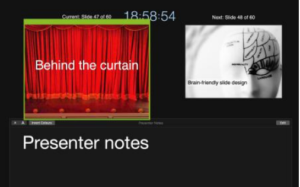Teach the Rainbow: Queering our ELT Materials and Practices so Everyone Belongs
Teaching materials mostly focus on grammar and lexis – but often seem to fail to paint a realistic, inclusive picture of our social landscapes. Tyson Seburn explains why minority representation matters and how English teachers can bring diversity into their classrooms.
I am staring at a blank page. I should be writing materials for B1 learners, but I’m still staring – I know the target language and I know the types of activities I’m expected to incorporate. Still, I have questions, ones that other writers and teachers may only briefly consider, if at all.
- How will the content help all the learners feel they belong to this learning experience?
- What will my choices of content convey about what and who is valued?
Answers to these two questions can significantly impact how learners feel about the materials and more importantly, about themselves.
Language learning is most effective when the language and activities are relevant to the learners using them. The narratives (i.e. texts, audio, visuals) in our materials are not only vehicles for modeling target language; they collectively paint a picture of what people are worthy of being included and which experiences are valued.
Choosing relatable content
Let’s use a snapshot of a lesson to demonstrate. Take a coursebook unit that focuses on polite requests. Throughout the unit, there are the usual four skills, grammar, and pronunciation activities. One unit situation included is applying for a mortgage, where that target language will be used.
We see a couple sitting at a desk, one holding a pen about to sign a document while the other looks on with anticipation. Across the desk is a person in a jacket, who most likely is the mortgage specialist. There is a short text at the top of the page setting the scene and an audio dialogue with gap-fill under the image.
One set of questions we may ask ourselves when looking at these pages is about situational relevance. What if our learners aren’t likely to apply for a mortgage? What if there’s a different process in our context for buying a house than the way it’s presented here?
It can be easy for our learners to disconnect from materials when they don’t see themselves in them.
Yes, the grammar, the lexical set, and the functional language is probably real, but for your learners, is this context and this use of the language irrelevant? Surely we would adapt or skip this part of the unit altogether.
Ultimately, it can be easy for our learners to disconnect from materials when they don’t see themselves in them. For these reasons, it is our responsibility to do our best to create and give access to learning materials that support our learners’ needs. However, this also includes narratives.
Narrative biases – who do you think does what?
Then, another set of considerations we should make concerns the narratives themselves, assuming the situation itself is not the problem. When you pictured the unit as you read about the bank loan for a mortgage situation above:
Who were the couple that came to mind?
What:
- do they look like?
- are they wearing?
- are their names?
What does the mortgage specialist look like?
What:
- bank are they at and what does it look like?
- kind of information set the scene in the text?
- did the couple and mortgage specialist say to each other in the dialogue, how do they sound?
Your answers to these questions can be interesting to think about.
So who does what then?
Let’s examine a sample narrative for this unit, including a preview text, a visual, and dialogue.
TEXT – relevant vocabulary, target language
Somchai and Lucas are first-time homeowners, at least they want to be. They are applying for a mortgage. Today, they are at Deutsche Bank to discuss terms with a mortgage specialist, Emilia. If all goes well, they will probably sign the mortgage application.

AUDIO
Somchai: Hi Emilia. We’ve looked over the application and we’d like to discuss the interest rate on the mortgage. Would it be possible to lower it in any way? 2,0% is a little high for us.
Emilia: OK, let me see what I can do. Ahh yes, the interest rate for a 10-year term is lower than 20 years. However, the shorter term disqualifies you from the first-time homeowner bonus. Do you think that this option might suit you better?
Lucas: I think we should weigh these options first. Do you mind if we talk privately for a few minutes?
Emilia: No, of course not. I’ll come back in 10 minutes.
Inclusion and belonging – diversity as the new normal
When you compare the total sample narrative with the one you imagined at first, there are likely to be differences. It can be helpful to cycle back to the two questions we began with:
- How will the content help all the learners feel they belong to this learning experience?
- What will my choices of content convey about what and who is valued?
When we answer these questions, learner identities play an important role for relevance. However, the situation and language context matter just as much. If we represent certain identities as stereotypes or erase them completely from the materials we use, how can learners feel connected to, invested in, or valued by them?

Therefore, it’s best to normalize diversity by showing people in relatable contexts (such as planning a vacation, visiting a restaurant or some other everyday situation) without highlighting their perceived “otherness”.
Stick it on your fridge: Inclusion 101
To promote inclusion and belonging in our practice, I have a few maxims on post-it notes near me:
- Do the work. Before you try to improve anything, read stories by underrepresented individuals. Watch videos from minority voices. Listen to podcasts about race, queerness, and disability that centre these experiences.
- Reality has variety. Let go of any preconceived notions of what X people are. One of the best ways to avoid reducing a group of people into one version is to increase the opportunity they appear in our materials. For instance, more than one LGBTQ narrative means we can showcase more individuality.
- Nothing is always centred. Place focus away from a perceived default where possible. For example, English (and perceptions of culture) is centred in our lessons by default. It doesn’t need more help or power. Take the opportunity where natural to localise names, places, experiences, and even use L1.
For a more in-depth exploration of inclusive practice, see my new book, How to Write Inclusive Materials (2021).
***
If you enjoyed this article, you may also be interested in our interviews with LGBTeachers!



















